Supersets and tri-sets allow you to perform a lot of work in a short period of time. The rest-pause method allows you to use heavier weights, so you can recruit the higher threshold muscle fibers, and eccentric training enables you to overcome strength plateaus. The bottom line is that almost any training method will work (provided you do it with intensity!), at least for the few weeks it takes for your body to adapt to it. There is, however, one training system that stands above all the rest. It's brutally hard, but I've found it to be a very effective way to pack on muscle fast!
In strength-coaching circles, this method is often called the "ten sets method." Because it has its roots in German-speaking countries, I like to call it German Volume Training. To the best of my knowledge, this training system originated in Germany in the mid-'70's and was popularized by Rolf Feser, who was then the National Coach of Weightlifting. A similar protocol was promoted by Vince Gironda in the U.S., but regardless of who actually invented it, it works.
In Germany, the ten-sets method was used in the off-season to help weightlifters gain lean body mass. It was so efficient that lifters routinely moved up a full weight class within 12 weeks. It was the base program of Canadian weightlifter Jacques Demers, Silver Medalist in the Los Angeles Olympic Games. Jacques was known in weightlifting circles for his massive thighs, and he gives credit to the German method for achieving such a spectacular level of hypertrophy. The same method was also used by Bev Francis in her early days of bodybuilding to pack on muscle.
The program works because it targets a group of motor units, exposing them to an extensive volume of repeated efforts, specifically, 10 sets of a single exercise. The body adapts to the extraordinary stress by hypertrophying the targeted fibers. To say this program adds muscle fast is probably an understatement—gains of ten pounds or more in six weeks are not uncommon—even in experienced lifters!
Goals and Guidelines
The goal of the German Volume Training method is to complete ten sets of ten reps with the same weight for each exercise. You want to begin with a weight you could lift for 20 reps to failure if you had to. For most people, on most exercises, that would represent 60% of their 1RM load. Therefore, if you can bench press 300 lbs for 1 rep, you would use 180 lbs for this exercise.
For lifters new to this method, I recommend using the following body-part splits: Day 1: chest and back, Day 2: legs and abs, Day 3: off, Day 4: arms and shoulders, Day 5: off.
When using this program—or any other, for that matter—you should keep a detailed journal of the exact sets/reps and rest intervals performed, and only count the repetitions completed in strict form. Here are a few more guidelines to ensure optimal progress:
Rest Intervals: When bodybuilders start with this method, they often question its value for the first several sets because the weight won't feel heavy enough. However, there is minimal rest between sets (about 60 seconds when performed in sequence and 90-120 seconds when performed as a superset), which incurs cumulative fatigue. (Interestingly enough, you might find you get stronger again during the eighth and ninth sets—this is because of a short-term neural adaptation.) Because of the importance of the rest intervals, you should use a stopwatch to keep the rest intervals constant. This is very important, as it becomes tempting to lengthen the rest time as you fatigue.
Tempo: For long-range movements such as squats, dips, and chins, use a 4-0-2 tempo; this means you would lower the weight in four seconds and immediately change direction and lift for two seconds. For movements such as curls and triceps extensions, use a 3-0-2 tempo.
Number of Exercises: One, and only one, exercise per body part should be performed. Therefore, select exercises that recruit a lot of muscle mass. Triceps kickbacks and leg extensions are definitely out—squats and bench presses are definitely in. For supplementary work for individual body parts (like triceps and biceps), you can do 3 sets of 10-20 reps.
Training Frequency: Because this is such an intense program, it'll take you longer to recover. In fact, if you're familiar with the writings of Peter Sisco and John Little, you'll find that the average "Power Factor Rating" of the 10-sets method is about 8 billion. Consequently, one training session every four to five days per body part is plenty.
Overload Mechanism: Once you're able to do 10 sets of 10 with constant rest intervals, increase the weight on the bar by 4% to 5%, and repeat the process. Refrain from using forced reps, negatives, or burns. The volume of the work will take care of the hypertrophy. Expect to have some deep muscle soreness without having to resort to set prolongation techniques. In fact, after doing a quad and hams session with this method, it takes the average bodybuilder about five days to stop limping.
Beginner/Intermediate Program: Phase 1
This is a sample routine based on a five-day cycle. Once you've used this method for six workouts per body part, it's time to move on to a more intensive program for a three-week period.
Day 1: Chest and Back Exercise Sets Reps Tempo Rest Interval
A-1 Decline Dumbbell Presses,
Semi-Supinated Grip
(palms facing each other) 10 10 4-0-2 90 seconds
A-2 Chin-Ups (palms facing you) 10 10 4-0-2 90 seconds
B-1 Incline Dumbbell Flyes 3 10-12 3-0-2 60 seconds
B-2 One-Arm Dumbbell Rows 3 10-12 3-0-2 60 seconds
Notes: Rest 90 seconds between each "A" exercise and each superset; rest 60 seconds between each "B" exercise and each superset. Incidentally, I only recommend three sets of ten in this program for the "B" exercises. The "B" exercises constitute supplementary work, and doing ten sets of them would result in overtraining.
Day 2: Legs and Abs Exercise Sets Reps Tempo Rest Interval
A-1 Back Squats 10 10 4-0-2 90 seconds
A-2 Lying Leg Curls 10 10 4-0-2 90 seconds
B-1 Low-Cable Pull-Ins* 3 15-20 2-0-2 60 seconds
B-2 Seated Calf Raises 3 15-20 2-0-2 60 seconds
(*Take a weightlifting belt and buckle it. Attach it to the low pulley of a cable crossover machine. Lie down on your back in front of the machine, and hook your feet in the belt. Then pull your knees towards your chest.)
Notes: Rest 90 seconds between each "A" exercise and each superset; rest 60 seconds between each "B" exercise and each superset.
Day 3: Off
Day 4: Arms and Shoulders Exercise Sets Reps Tempo Rest Interval
A-1 Parallel Bar Dips 10 10 4-0-2 90 seconds
A-2 Incline Hammer Curls 10 10 4-0-2 90 seconds
B-1 Bent-Over Dumbbell
Lateral Raises* 3 10-12 2-0-X 60 seconds
B-2 Seated Dumbbell
Lateral Raises 3 10-12 2-0-X 60 seconds
(*While seated on the edge of a bench with your torso bent over, raise the dumbbells out to the side, making sure the top two knuckles—the ones closest to your thumb—are in line with your ears at the top of the movement.)
Notes: Rest 90 seconds between each "A" exercise and each superset; rest 60 seconds between each "B" exercise and each superset. "X" in the tempo means to move as fast as possible, keeping the weight under control.
Day 5: Off
Beginner/Intermediate Program: Phase 2
After six of those five-day cycles, I recommend you do a three-week phase where the average set is six to eight reps, and do only four to six sets per body part over a five-day cycle, or you can do any other split that suits your recovery pattern. After this three-week block, you can return to the German Volume Training method by doing the following ten sets of six reps routine. In the exercises that are prescribed for 10 sets, use a load you'd normally be able to do 12 repetitions with. The goal in this phase is to do ten sets of six with that load.
SAMPLE 10 sets of 6 routine:
Day 1: Chest and Back Exercise Sets Reps Tempo Rest Interval
A-1 Incline Dumbbell Presses 10 6 5-0-1 90 seconds
A-2 Wide-Grip Pull-Ups
(palms facing away from you) 10 6 5-0-1 90 seconds
B-1 Flat Dumbbell Flyes 3 6 3-0-1 60 seconds
B-2 Bent-Over Rows with EZ Bar 3 6 3-0-1 60 seconds
Notes: Rest 90 seconds between each "A" exercise and each superset; rest 60 seconds between each "B" exercise and each superset.
Day 2: Legs and Abs Exercise Sets Reps Tempo Rest Interval
A-1 Bent-Knee Deadlifts 10 6 5-0-1 90 seconds
A-2 Seated Leg Curls 10 6 5-0-1 90 seconds
B-1 Twisting Crunches 3 12-15 3-0-3 60 seconds
B-2 Standing Calf Raises 3 12-15 3-0-3 60 seconds
Notes: Rest 90 seconds between each "A" exercise and each superset; rest 60 seconds between each "B" exercise and each superset.
Day 3: Off
Day 4: Arms and Shoulders Exercise Sets Reps Tempo Rest Interval
A-1 Parallel Bar Dips 10 6 5-0-1 90 seconds
A-2 Incline Hammer Curls 10 6 5-0-1 90 seconds
B-1 Bent-Over Dumbbell
Lateral Raises 3 10-12 2-0-X 60 seconds
B-2 Seated Dumbbell
Lateral Raises 3 10-12 2-0-X 60 seconds
Notes: Rest 90 seconds between each "A" exercise and each superset; rest 60 seconds between each "B" exercise and each superset.
Day 5: Off
For the advanced trainee, variety in training is even more important to elicit adaptation. With the advanced trainee, I use a system called the four percent method. That is, I increase the load four to five percent every workout for two workouts in a row, and I reduce the target rep by one rep for every weight increase. Then I reduce the weight four to five percent and increase the rep bracket to its original starting point. Since this is very mathematical, let's look at an example that will clearly illustrate this point.
Let's say you can barbell curl 100 lbs for 12 strict reps, and you haven't been able to increase the amount of reps or weight on this exercise. Here's a sample routine that would increase your curling strength:
Workout 1: 10 sets of 6 @ 110 lbs
Workout 2: 10 sets of 5 @ 115 lbs
Workout 3: 10 sets of 4 @ 120 lbs
Workout 4: 10 sets of 6 @ 115 lbs
Workout 5: 10 sets of 5 @ 120 lbs
Workout 6: 10 sets of 4 @ 125 lbs
Workout 7: Test day. At this point, you would curl 120 for 12 reps, a 9% gain over 6 workouts!
Here's an example of the German Volume Training method with the 4% to 5% method for someone who can bench press 300 lbs 10 times in strict form:
Workout 1: 10 sets of 5 @ 300 lbs
Workout 2: 10 sets of 4 @ 315 lbs
Workout 3: 10 sets of 3 @ 330 lbs
Workout 4: 10 sets of 5 @ 315 lbs
Workout 5: 10 sets of 4 @ 330 lbs
Workout 6: 10 sets of 3 @ 345 lbs
Workout 7: Test day. At this point, you would bench press 330 lbs for 10 reps.
To recap, perform the Beginner/Intermediate Phase 1 program for six weeks (six 5-day cycles). Then, progress to the Beginner/Intermediate Phase 2 program for three weeks. After that, you'll be ready to graduate to the Advanced program.

 thanks.
thanks. thanks.

 Please Scroll Down to See Forums Below
Please Scroll Down to See Forums Below 










